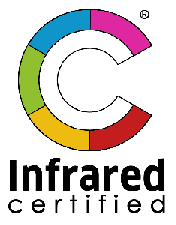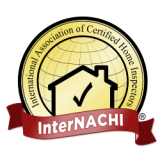What's Inspected During A Home Inspection
The Home Inspection
A home inspection is essentially a visual and non-invasive examination of the condition of a home, often in connection with the sale of that home. This is carried out by a home inspector, who has special equipment and training to carry out such inspections. An inspector will check the items listed below and many other aspects of the home looking for improper building practices, those items that require extensive repairs, items that are general maintenance issues, as well as some fire and safety issues. Any significant defects, safety concerns, or adverse conditions identified by the inspector will require further evaluation by a specialist, such as a roofer, plumber, electrician, etc. The subsequent home inspection report is a comprehensive document covering the following components:
- Exterior
- Site
- Roof
- Fireplace & Stoves
- Plumbing
- Electrical
- HVAC
- Interior Components
- Attics
- Crawlspace
- Insulation & Ventilation
- Attached Garages - Carports
Types of inspections
- Buyer's Full House Inspection
- Seller's Pre-Listing Inspection
- One Year Warranty Inspection
- WDO (Wood Destroying Organisms) Inspection
- EIFS (Exterior Insulation and Finish System) Inspection
- Construction Progress Inspection
Buyers Full House Inspection
The buyer full house inspection also includes the WDO inspection, which is required by Washington Administrative Code and should be performed by a licensed structural pest inspector. Refer to My Qualifications. The inspection takes approximately three hours, but can vary due to the extent of problems or accessibility to components. At the conclusion of the visual inspection, the inspector reviews any issues with the client and answers any questions that arise. Reports are generated that day or the next morning at the latest, and sent via email and/or uploaded to the internet where the client can view/download the reports.
One Year Warranty Inspection
New home construction comes with a one year warranty provided by the builder. In some cases a longer warranty may be provided. At the end of the warranty period, a home inspection should be performed to determine if there are any covered components that should be repaired or replaced by the builder before the expiration of the warranty period.
EIFS (Exterior Insulation & Finish System) Inspection
What is EIFS
EIFS stands for Exterior Insulation and Finish Systems, also known as synthetic stucco. This system was introduced into the United States in 1969 by Dryvit Corporation, and is principally a marriage of two modern materials, polymers and polystyrene.
What is the difference between EIFS and Stucco?

The typical EIFS installation is comprised of :
-
Expanded Polystyrene (EPS)
- Mesh
- Basecoat
-
Finish coat
Stucco is a Portland cement based plaster, which is usually applied in two steps, the basecoat and hard coat finish.
Both systems have advantages and disadvantages.
EIFS systems cannot be visually inspected alone, it is a specialized inspection requiring specialized equipment such as a TRAMEX wet wall detector and a FLIR Infrared Camera. I have been an Exterior Design Institute Certified 3rd Party EIFS inspector since 2003.
Seller Inspections-Home Sellers Pre-listing Inspection
- Might make the home show better.
- Gives the seller time to make repairs and shop for competitive contractors.
- Permits the seller to attach repair estimates or paid invoices to the inspection report.
- Removes over-inflated buyer procured estimates from the negotiation table.



